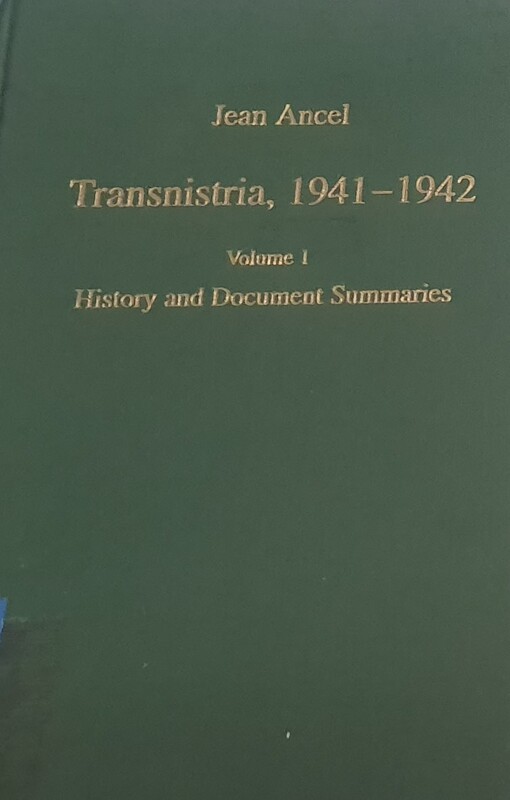Transnistria, 1941-1942 : the Romanian mass murder campaigns
Item
Title
Transnistria, 1941-1942 : the Romanian mass murder campaigns
Description
Vol. 1 comprises a history of the events (pp. 17-539) and summaries of the 1,109 documents presented in vols. 2-3. The history describes actions perpetrated by the Romanians in Transnistria in 1941-43, after the territory was captured by German and Romanian troops. A new province of Romania, Transnistria was established in August 1941. Earlier, the German SS had murdered ca. 100,000 of its Jews. In September 1941, the Romanians began to resettle the Jews of Bessarabia and other Romanian provinces in Transnistria, aiming to expel them further to the German-occupied area of Ukraine. This plan failed, and part of the Jewish populace was then resettled in ghettos in northern Transnistria and others were incarcerated in death camps in southern Transnistria (e.g. Bogdanovka, Domanevka, Akhmechetka), where most of them were killed by the Romanian gendarmes and their helpers in 1941-42. Describes the murder of ca. 80,000 Jews in the Golta district, of which Modest Isopescu was prefect, in Odessa, and in the Berezovka district. Stresses that it was Antonescu and Transnistria's governor Alexianu who were the initiators of the resettlement to and the genocide in Transnistria. Many of the Jews died of typhus and other contagious diseases. The Romanian authorities were reluctant to fight the epidemics in any way other than mass killing; it was the Jews of the rest of Romania who came to the aid of their brethren. Dwells on the role of the Romanian Church in the Holocaust. Most of the documents in vols. 2-3 are from the newly opened archives in Ukraine and Moldova. (From the Bibliography of the Vidal Sassoon International Center for the Study of Antisemitism - The Hebrew University of Jerusalem)
Creator
Jean Ancel
